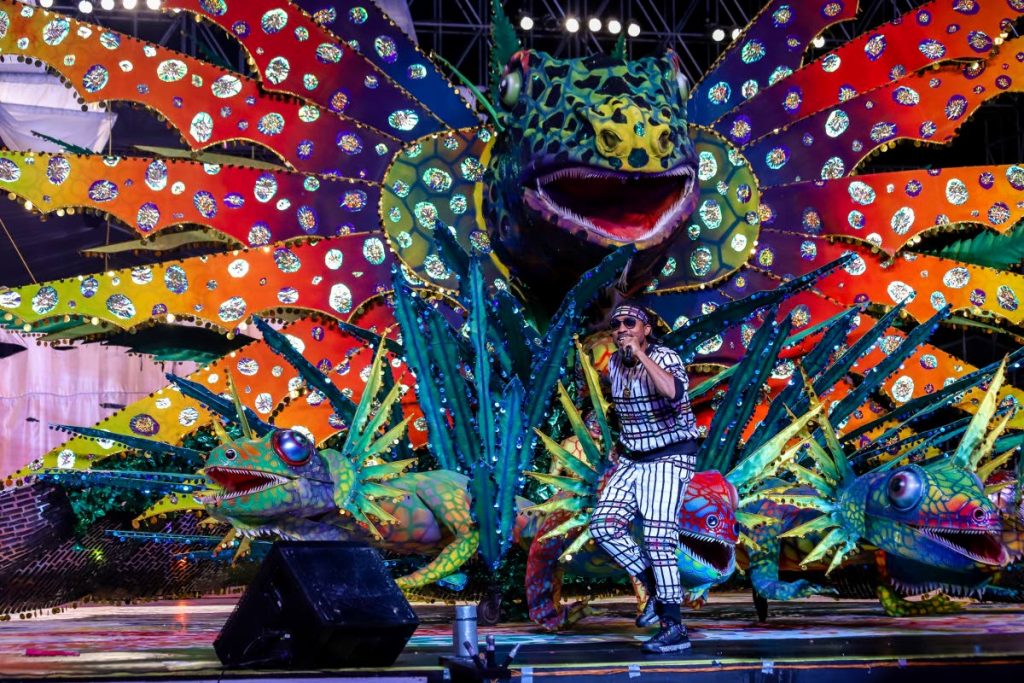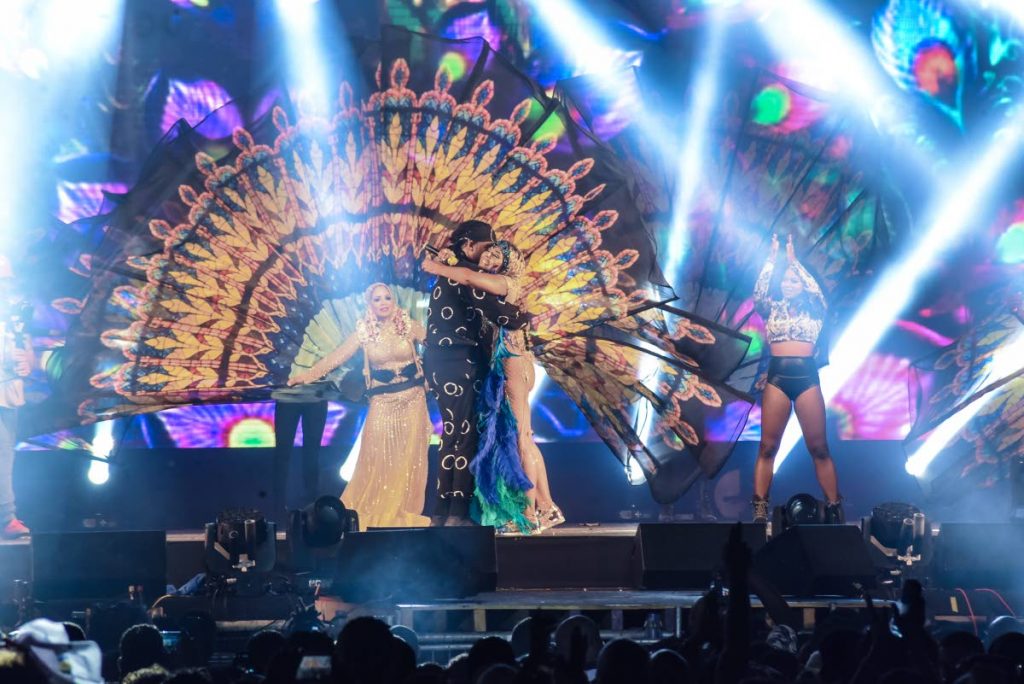On a soca journey

SHEREEN ANN ALI
DRIVING between hectic performing gigs on Carnival Saturday night (March 2), soca singer and music businessman Machel Montano spoke to Newsday about some of the influences that have been shaping his outlook on life. And while it’s tempting to think that you know someone because of their public performances, that would be a mistake: the public, performing self is often quite different from the private self away from the glare of stage lights.
This is as true of Montano as it is with probably many entertainers: how much of yourself should you really share with the public? It can be a tricky balancing act.
Montano, at 45 years of age, now sports a few grey hairs in his beard, but the energy he expends on a stage is astounding, and he can animate a party crowd like a maestro of human bodies. Does he have to train to prepare himself physically and mentally for the rigorous Carnival party season?
“Definitely,” he says, “We start a very strict gym regime long before Carnival, we curtail our diet to eat less carbohydrates, and I have stopped eating meats. Since June last year I have been vegan. We also do yoga and meditation, and part of meditation is about eating in accordance with what will still our mind.”

Kerwin Pierre
It sounds paradoxical: stilling your mind while also whipping crowds up into party frenzies. But the latter is part of the job description for any soca entertainer in TT, especially one who works the Carnival party circuit: connecting with a crowd to make them dance and feel happy. And as with any form of livelihood, meditation can be a useful tool to relax and centre one’s energies, in order to perform better in the other parts of one’s life.
The meditation must be working for him: Montano performed an amazing seven fete events in just one 24-hour period last weekend, as he shared on a Sunday Instagram video post: “We start last night at Ultimate One (in Valsayn South), then we went to Jamboree with the band (cooler party at Queen’s Park Oval), then we just wake up and went to Iron Bloko, then Water/ Wetness, now we heading to (Kairi) Breakfast Is, then we going to Sunny Side Up, Breakfast Party again in the West.
After that we doing Dimanche Gras…and then we have Paradise. After that, we have Carnival Monday and Tuesday. This is what you call non-stop jam.”
Such a schedule requires stamina. But far away from all the Carnival sweat and dust, Montano has been quietly exploring different spiritual philosophies for years now. Fans have noticed that he’s been sharing inspirational, empowering affirmations on his Instagram feed, such as this one he quotes from the Law of Positivism: “Souls recognise each other beyond the five senses, through intuition and a balance of energies within. The energy within us unites us. We are One. Divine Creator, may our heart and soul give us guidance. May we listen to our inner voice and remember the energy that we are in order to recognise the energy that we want to attract. Amen.”
“Since 2000, I have been practising meditation, finding different steps and techniques along the way,” Montano shared in a telephone interview en route to another fete. “I practise Sivananda Yoga (a form of hatha yoga based on proper exercise, breathing, relaxation, diet, positive thinking and meditation). I have also explored Isha Yoga (a programme that fosters inner growth and transformation). I went to India in 2018 and I’ve studied meditation in the Himalayas with a few people. The last two years I’ve increased the intensity of my meditation.
“But I’ve been on my own spiritual journey since 2000. I was born a Catholic and in 2000 I started studying Buddhism. I also did research into Hinduism, reading the Bhagavad Gita and learning some of the mantras. From there I started learning meditation techniques, and started doing transcendental meditation.” Transcendental meditation is a form of silent mantra meditation introduced by Maharishi Mahesh Yogi in the mid-1950s.
Montano then explored Self Realisation Fellowship, an organisation founded in 1920 by Paramahansa Yogananda who pioneered yoga in America. Yogananda emphasised the underlying unity of the world’s great religions and taught universally applicable methods for attaining direct personal experience of God. He taught Kriya Yoga techniques to awaken the soul. Montano’s journey finally led him to embrace Sivananda yoga which involves daily chanting of positive mantras.
He says: “I believe there is a spiritual dimension to everything that we do. We live in a spiritual and a physical world. One is based on our outward senses – things we can see, hear, smell, touch, taste. Then there’s a sixth sense – what we feel inside, our energies.”
Does Montano think there is a spiritual dimension to music?
He says, “To me, music is vibration. Where there is vibration, there is sound. For example, think of the sound Om – as you say it, it vibrates in different parts of the body, to create different sensations, that can lead to different thoughts or actions… Sound and music have an effect on people; certain tones affect people and even animals in different ways. Spiritually, some kinds of music can move you.
"There is a level of transcendence that can happen with music… You can feel it in Spiritual Baptist music.”
He says sometimes spirituality can translate into fete songs, sometimes not, and asks who is really to judge whether a song or a piece of music is sacrilegious or simply fete music. “I try not to judge people, I think there’s a level of conscious and unconscious elements to everything we do. But I think that there is a level of spirituality you can find in a fete, it’s like a form of unity when everybody is together dancing.”
Montano is clear that he is still very much on his own spiritual and musical journey, which is a gradual process – you can’t just jump from A to B, he says, so people have to be patient with the journey. He says he tries to inspire young people to experiment and develop their own musical talents even as he himself seeks to develop his music.
His own personal “MONK” (Movement Of New Knowledge) philosophy, he says, is about music that can be played anywhere – “by the mountain, by the river, by a fireside, in the jungle, in a cave, driving in a car, anywhere.”
But he observes that soca music has grown up in a constraining square box, straddled on one side by a bar and on another side by a fete. The challenge, he says, is to do the work to break out of that box.

Comments
"On a soca journey"